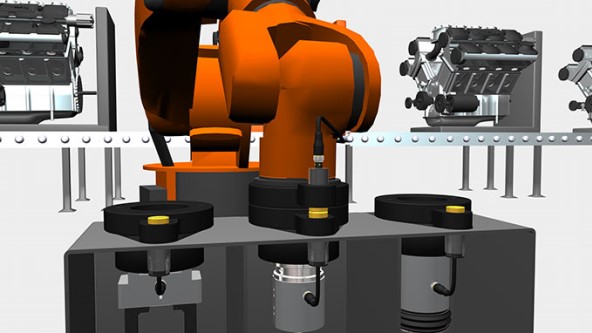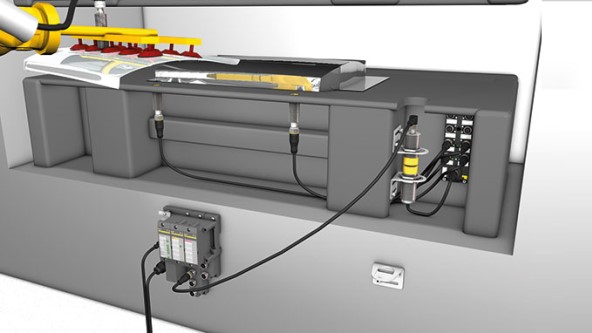Challenge Tool Changer
Several connections are required between the fixed machine component and the tools: as well as being connected mechanically, the two components also need to transmit power and I/O data.
For this reason, the electrical connections require multi-pin plug connectors and multi-core cables. These connections are placed under heavy strain by the high frequency of the mating cycles and must guarantee a high level of contact reliability. The consequences are high purchasing costs and production downtimes due to wear and tear. One alternative to this solution is to use contactless inductive couplers to transmit data and power. Via IO-Link (Application Specific Tag) new tools can be identified contactless by NIC couplers and TBIL-I/O-hub.
Your Benefits
- Reduced changeover times by automated changing of molds during the process
- Reduced standstill due to wear-free energy and data transmission
- The combination of I/O hub and inductive coupler transmits up to 16 switching signals
- The workpiece carrier can be identified using the I/O hub
The electrical connections require large multi-pin connectors and multicore cables to achieve this end. This complexity has its price: the connections regularly cause problems and are expensive to buy and maintain.
The fact that the connections also require a high degree of accuracy regarding the mechanical alignment between machine components further increases machine costs.
Another difficulty with this arrangement is that, should it be required to distinguish between several variants of the exchangeable part, further I/Os are required - both in the I/O system and on the machine. All this increases costs, as well as complexity and the sizing of the connectors between machine parts.
Select Country
Turck worldwide







